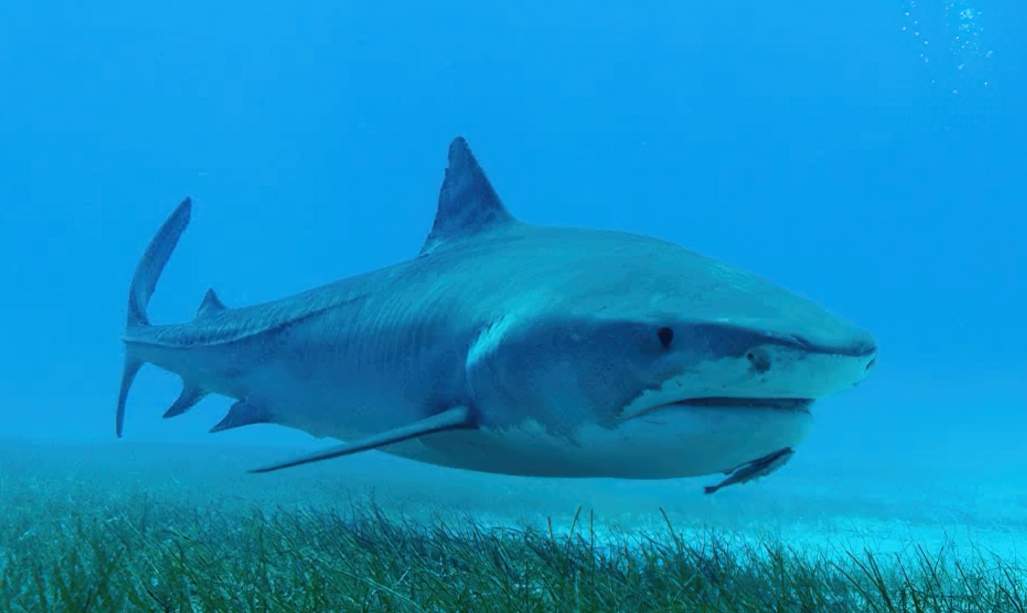Bahama Banks, Bahamas —(Map)
Scientists have discovered the world’s largest known field of sea grass. They did it using videos shot by some unusual helpers: tiger sharks. The work should help protect the sea grass, and also shows off a powerful way to explore the ocean.
Sea grasses are flowering plants that normally grow in shallow waters near coasts. They grow in thick fields, known as meadows. Sea grass meadows help clean the ocean’s water, and provide food and shelter for many sea creatures.

(Source: Cristina Mittermeier [CC BY-SA 4.0], via Nature.)
Importantly, sea grass meadows also help in the fight against the climate crisis. That’s because they store huge amounts of carbon – the harmful pollution that’s making global warming worse. Damaging these sea grass meadows can release this pollution again, so it’s important to protect them.
But though they’re very important, scientists don’t have a good idea of the size and number of the world’s sea grass meadows. From above, the meadows can be hard to spot, either because the water is too deep or not clear enough. And the ocean is so huge that it’s simply not possible to study it all by diving.

(Source: Beneath the Waves.)
So a team of scientists decided to have sharks help with the research. Tiger sharks are huge, strong, and deadly. But they also live underwater, are fast swimmers, and spend a lot of time in sea grass meadows.
Between 2016 and 2020, a team of researchers attached cameras and other trackers to the fins of seven tiger sharks. After catching the sharks, the scientists worked quickly to attach the equipment, then let them go again.
The cameras were designed to fall off after a few hours and float to the surface. Tracking signals helped the scientists find the floating cameras and collect the videos the sharks had taken. The scientists were left with hours of videos taken as the sharks traveled for miles over the sea floor.

(Source: Beneath the Waves.)
The researchers also used other tools to look for sea grass, including satellite images, as well as images taken by divers and boats. They also had tracking information (without videos) from 2,595 miles (4,177 kilometers) traveled by tiger sharks.
Putting all this information together, the scientists learned that the waters around the Bahamas are home to the largest sea grass meadow ever discovered.
The researchers say the meadow covers at least 25,500 square miles (66,000 square kilometers), and could be as large as 35,500 square miles (92,000 square kilometers). The discovery means that the world has roughly 40% more sea grass meadows than scientists previously thought.

(Source: Austin Gallagher [CC BY-SA 4.0], via Nature.)
The project is important for several reasons. Since sea grass is so valuable in fighting global warming, it’s important to know where it is. As one scientist told The Guardian, “If we don’t know where it is, we can’t protect it.”
The program also shows how useful large underwater animals can be in helping to learn more about life under the sea. Oliver Shipley is a scientist at Beneath the Waves, which led the work. He says animals like tiger sharks “… are going to take us to new places that we didn’t know existed.”
😕
This map has not been loaded because of your cookie choices. To view the content, you can accept 'Non-necessary' cookies.
